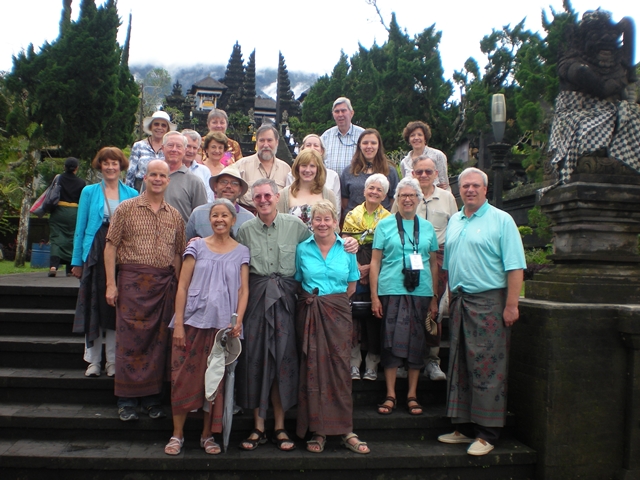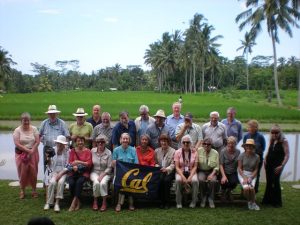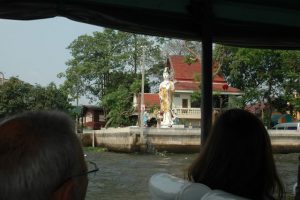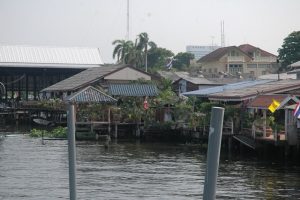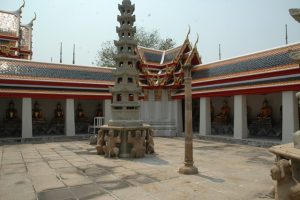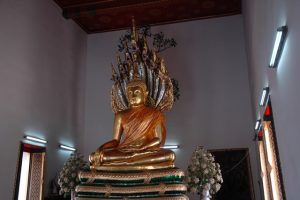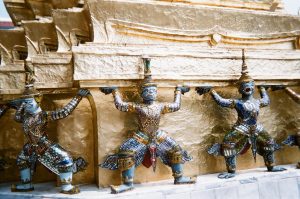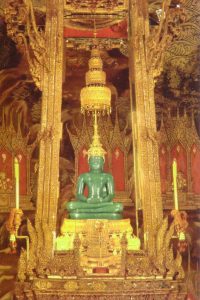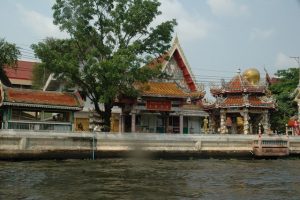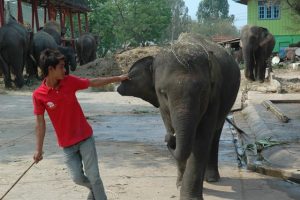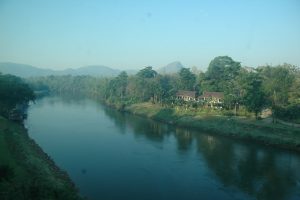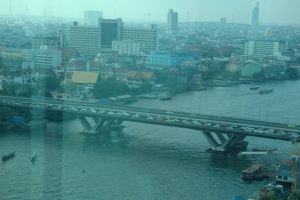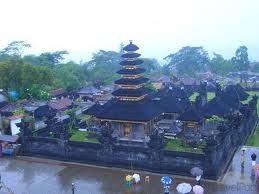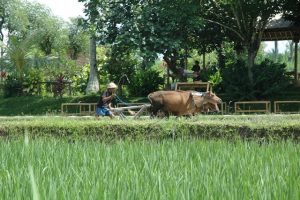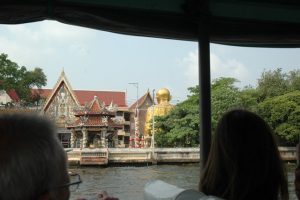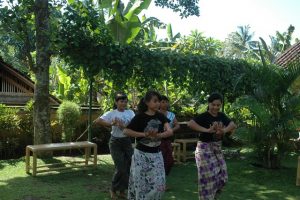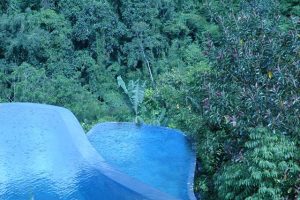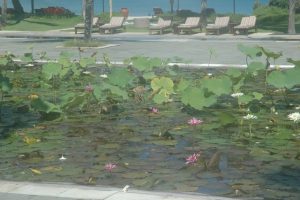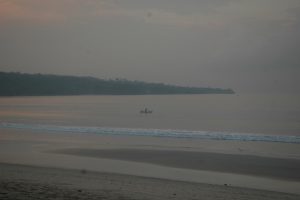Shavuous/Pentecost 2013
Pictures and notes from a March 2013
Joint Vanderbilt, UC Berkeley Alumni Trip to Southeast Asia
along with some more thoughts on the metaphysics of the Jewish Passover Seder Plate,
Bangkok temple commentaries on the Buddhist Sutras on Breathing, and
Hindu Chakra Meditation schemes from Bali and Vicksburg
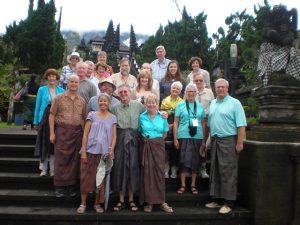
Figure 1UC Cal Berkeley, Vanderbilt alumni members of the 2013 Eastern and Oriental Express train trip to Thailand, Malaysia, Bali [picture taken at the large Hindu Besakih temple volcanic mountaintop complex which overlooks the ocean. The lofty Temple Besakih[figure 38], actually a complex of 24 temples, is the Mother Temple of Bali. photo courtesy of Phil UC Alumni Representative: first row Dorothy Phillips Gold River California, Ted LaRoche and Gloria LaRoche Murfreesboro, Tennesse, Mary and Albert Huddleson Dallas Texas, second row Phil Cunliffe, Andrew Harrell Vicksburg, MS, Jennifer Yelland, Laguna Beach CA, Mary Dewall Davis California third row Ernie and Susan Hoyer Half Moon Bay, California, Caroline Huddleston Austin Texas, Les DeWall Davis California, fourth row Rodney and Raetta Schatz Lodi California, Dave Wright Renton Washington and Karen Hansen Isaquah, Washington, Erika Huddleston Austin Texas top row Helga and Reinhard Schwartz, Cheryl Devecka Pittsburgh, Pennsylavania. Not pictured in this photo but also on the trip: Patricia O’Grady and Roberta O’Grady New York NY and Willem tenHove and Beate tenHove Towaco, New Jersey, Loni and Bob Danzler San Francisco California, John and Nancy Neerhout Belvedere, California.
Steve Phillips Gold River California And AHI group tour leader Jessie Lim-Pendergrass, Beate and Willem ten Hove,David Wright.
Figure 2 group photo taken at the AHI Bali rice growing seminar lunch….first row left to right [only those not listed in previous picture named] Betti tenHove Towaco, New Jersey, Loni Danzler San Francisco, CA,Nancy Neerhout Belvedere, CA, second row left to right [not in previous picture] Willem TenHove Towaco, New Jersey, Bob Danzler San Francisco CA, Steve Phillips Gold River CA, John Neerhout, Belvedere CA., Roberta O’Grady and Patricia O’Grady, New York, NY. Cal portion of our group of travelers.
Figure 3 Chinese Buddhist temple on the Thonburi river canal that runs through Bangkok.
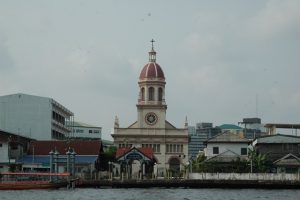
Figure 4 Christian cathedral situated on the Chao Phraya river as it flows through the city of Bangkok
Taken from a OurPrayerGroup.blogspot.com posting 2007
The 15 steps of the Passover Seder
(forming a Jacob’s ladder from heaven to earth)
And the four cups of Salvation,Redemption, Justification, Sanctification
First three
1)hakadesh First cup of Salvation
Santification
3)karpas 2) urachatz
(vegetables, wash hands)
Second three
6)rachtzah 5)maggid 4) yachatz
(wash hands,tell story, break middle matzoh)
Second cup of Redemption
Third three
8)maror 9) matzah 7)motzyaa matzah
(bitter herb, bread of life, grace before meal)
Fourth three
12)tzaphun 11)shulchan arayrech 10)koraych
(eat middle matzah, eat meal, bitter herb sandwich)
Fifth three
13) baraych grace after meal
Third cup of Justification
14)hallayl praise to God
Fourth cup of Sanctification
15) nirtzah
prayer for acceptance
The Haggadah teachings are not very standardized. There are hundreds of different
versions you can study. For instance:
“A Passover Haggadah” by Elie Wiesel
“Passover Haggadah” by Nathan Goldberg
“Vilna Gaon Haggadah”
“A Passover Haggadah” by North African Conference on Ethiopian Jewry
“A Passover Haggadh” by Sinai Publishing
Artscroll Mesorah Series “Transliterated Linear Haggadah
“The Passover Haggadah” published by G.I.O.H.
In terms of the metaphysical arrangements of how the 15 steps occur on the Seder Plate
I favor a version on one the plates I bought shown above with five dimensional sets of groups of threefold dimensional rungs in the ladder from heaven to earth.
In my mind this corresponds to the two-fold breakdown of the 15 steps into 7 terms of salvation and 8
Terms of redemption which make up YH or JaH the first half of God’s name as the Tetragrammaton.
Thus during these 8 days of the Passover Holy Week we received the static form of the body of God from His name Jah. Then, during the 7 by 7 days of counting the Omer we receive the dynamic or Shakti prophetic power of the second half of the name VH as His Word manifests and incarnates Itself shooting outward through from inside of us into the world.
Central to the Jewish teaching for Passover in the Haggadah there is the
discussion of the four different types of sons:
( there are also four different types humans know about God, the World, and
Each other:
1) We can know that we don’t know something.
2) We can not know something and not know that we don’t know it.
3) We can know something and know that we know it.
4) We can know something and not know that we know it.
1) The wise son or daughter, who asks to be taught, whom we should tell
everything (so he or she can be independent of us) when we are teaching him,
Chocham, mah hu omayr? Mah haodot v’ hachukim v’hamsh’phatim aser tzoach
Adonai Elohaynu etachehm V’af atah ehmor lo k’heel’chot haphehsah. Ayn
maph’tirin echar haphasach aphikoman.
The wise son, what does he say? “What is the meaning of these laws and
ordinances which the Lord Our God has commanded us?” What then do we say to
him to teach him about Pesach? Nothing is left out, including the rule that
nothing is eaten after the Afikoman
In my opinion the wise son is he who knows that he does not know something.
2) The evil son who thinks he is different( better) than others. For, he
thinks that we don’t need to interact and work together with others. Him, or
her we should confront. But, not because he or she is different from us.
Indeed they are our sons and daughters too.
Rash amah hu omayr? Mah haobodah hazoach lachehm? L’chehm v’lo lo.
The wicked son, what does he say? “What is the meaning of this that is
commanded to you?” (that is he says this to you and not himself).
Vol’phi shehhotzi et atz’mu mean hach’lehl v’chehpahr baakehr. V’af atah
hak’hayh et sheenavm emar lo:
Because he says it this way he has removed himself from us (the community)…
even he has denied the laws said to him.
Bobor zehh ashah Adonay Eloheynu B’tzati meemeetz’rim. Li v’lo lu. Elu hayah
sham lo hayah neeg’al.
Answer him by saying it is because of that which has been done by the Lord
God for me when I came out of Egypt. “For me” and not “for him”. Had he been
there, he would not have been redeemed.
Is not the evil son like some one who doesn’t know something (what we want to
teach him) and doesn’t know that he doesn’t know it.
3) the simple son or daughter, whom we should assist by teaching him or her
to expect miracles and giving them a simple and easy to understand answer.
Tam mah hu omayr? Mah zoat? V’amar’ta elav. B’chazehq yad hotzianu Adonai
meemeetz’rim, meebayt abhadaym.
The simple son, what does he say? What is this? And, the answer to him:”With
a mighty hand Adonay brought us out from Egypt, from the house of bondage.
The simple son is some one who knows something and know that he knows it
(because what we have taught him is indeed, though a simple interpretation of
thing, what he knows).
4) What about the naïve but potentially good son or daughter who hardly knows
what to ask as a question or how to ask it? Them we should assist by treating
them special and using all our advanced techniques of breathing, assisted
contemplative prayer. But, we leave out the part above about the miracles and
the mighty hand,
V’shehaynu yoda lee’shol et patach lu? Shehnehmar: Vhagad’ata bhayom hahu
limor:
Bhovor zeh ashah Adonai Eloheynu bh’tzati meemeetz’raym.
And, what about him who does not know how to ask the question? (We quote from
the Torah) “And, on that day you shall teach him.” “We do all of this because
the Lord Our God brought us out of Egypt.”
The naïve son is some one who knows something (thinks that he knows it), but
he doesn’t actually know it yet (since we haven’t taught it to him yet).
A 10-Fold list of Biblical Words of Creation of Jesus Christ in the Holy
Spirit in US
1) YHWH Shammah (Ezekiel 48:35) The Lord is present
2) Elohim Yireh (Genesis 22 8-14) The Lord will provide for us
3) YHWH Rohi (Psalm 23) The Lord will guide us
4) YHWH Raphael (Exodus 15:26) The Lord God heals
5) YHWH Nissi (Exodus 17:15) The Lord is our banner
6) YHWH Mekadishkem (Exodus 33:13;22, 34:6-9, Leviticus 20:8;21:8;22:9,16)
The Lord our Sanctifier
7) YHWH Tzidkeenu (Jeremiah 23:6,33:16) The Lord is our righteousness
Seven of these names of God manifest themselves as God inside of different
spiritual places in our individual spiritual bodies…They are very similar to
the seven I am meditations that Jesus Christ speaks about himself in the
Gospel of John.
The other three invoke God, as being greater than each of us, but, inside of
all of us..
We can meditate on the first seven, then the last three…then the first
seven as the last, the first three after that and then the first three twice
as the first again (which makes a total of 26 the numerical value of the
Hebrew letters in God’s name the Tetragrammaton. This name is the most sacred
name of our creator, the father of Jesus Christ, the Word or concept, of God.
His only Son or concept of himself inside of us being the most sacred person
or the most sacred lifting up him upon us. He is an image and likeness, the
face of our God in us that is with us in the present moment now and which we
can worship as God among us on this earth today…If we have faith we can,
with his help, do this in order for our souls to go forwards and backwards in
time
8) Yah YHWH Saboath (1 Samuel 1:3) The Lord God of Hosts
9) Yah YHWH Elohim (Genesis 2:4-25) God as the Lord God
10) Yah YHWH Shalom El Chai (Judges 6:24) The Lord God of Peace and Eternal
Life
Also, it is possible to translate the first five of these Hebrew Juhuda
prayers into some thanksgiving, affirmative, petitionary words of Greek,
European, English, and American Christianity:
1) YHWH Shammah iff God and their/our Son Jesus Christ are present in us.
2) YHWH Yireh iff God and Christ Jesus are our providence.
3) YHWH Rohi iff God and Jesus Christ enlighten us and are the head of us
(our leaders).
4) YHWH Nissi iff God and his/her/our Son Christ Jesus hold the whole world
in their hands.
5) YHWH Rapha iff God and our Son Jesus Christ are our healers.
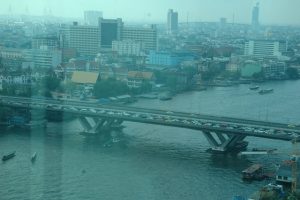
Figure 5 View of part of downtown Bangkok from the top floors of the Pennisula Bangkok hotel.
Figure 6 River garden restaurant along the Chao Phraya River. Our guide said the river floods often and last year her house got inundated with high water levels 12 foot above normal.
Figure 7 Courtyard adjacent to the central area of Wat Po the number two Buddhist temple in Bangkok.
Figure 8 Main statue of the Buddha in, Wat Po, the number two temple in Bangkok. The temple runs a school of Thai massage, but I just bought a book on the Buddha’s Anapassati Sutra.
Breathing in, we go back, we go forward
To God’s island of Christ inside ourself .*
There is an eternal tree of life
There is water, there are birds,
There is sunshine and fresh air.
Breathing out, we feel safe .**
Breathing in, breathing out,
God’s loving seed of faith and hope is blooming in us as a flower.***
We are fresh as the resurrection dew.
We are solid as the mountain
Here there is freedom and truth.
We are firm as God’s own earth in us.
We are the water of Christ’s baptism reflecting what is true.
Here there is goodness and beauty.
We are the space of God’s universe. We are free.
*Dear prayer friends, the Pure Land, the Kingdom of Heaven… is within us and among us. Breathe we are alive…please wake up to who we are! God has a plan for us! We have places to go together and things to do together!
**For all of us as Individuals and collectively together. For Christians try a ha-tha ra-ja 4:8:16 left right ratio alternate nostril breathing here (also called Sun Moon mental breathing). For Buddhists or Jews you will want to use a 4:4:8 in/hold/out ratio wisdom physical body wisdom breath to get here/there.
*** The starting form for these sutras are take from the Rev. Thich Nhat Hanh’s books and teachings . Please see previous blogs for more details.
A sitting meditation from the books, “Present Moment, Wondelful Moment” and “Be Free Where You Are”,by the Rev. Thich Nhat Hanh
Breathing in,I know I am breathing in, Breathing out, I know I am breathing out.
Breathing in, I notice that my in-breath has become deeper, Breathing out, I notice that my out-breath has become slower.
Breathing in I calm myself, breathing out, I feel at ease.
Breathing in I Smile,Breathing out I release.
Breathing in, I dwell in the present moment, Breathing in I feel it is a wondelful moment. ****
****These lines of the Sutras are designed to be used to concentrate and contemplate in a stable yogic sitting pose. Try an easy heart breath with ratio 5:5:5.
A more advanced 16 step procedure is outlined in the Book “Breathe You Are Alive” translation of and commentary on the anapanasati sutra on the full awareness of breathing.
By Rev. Thay. It is based on group of four steps inside of each of the four establishments of mindfulness: 1) the body in the body, 2) the emotions in the emotions, 3) the mind in the mind, 4) the dharma, objects of the mind inside of objects of the mind [righteously and truthfully expressed]
The book “A Handbook for the Practice of Anapanasati Bhavana” by Buddhadasa Bhikkhu which I bought at temple Wat Po gives a lot more information on these 16 steps of the technique of Theravada Buddhist breathing meditations. It is interesting to compare them with the discussions in Rev. Thich Nhat Hanh’s book. I will not repeat the material in his book, but below is a short summary of the comparable steps in the Thai Wat Po book:
Basic principles
1) Prepare the environment
2) Prepare the physical body in a good sitting posture
3) Train the breathing by using Samadhi or concentration of mental effort and learning to observe the breathing.
Meditating with open eyes is different than meditating with closed eyes. [it differs from Raja Yoga in which one withdraws the senses…pratyahara…1st in order to achieve samadhi. Of course, this just means there are different types of samadhi.. six or eight that I know of. They differ in terms of which parts of the environment our spiritual soul concentrates its mental effort in order to identify itself with something]
Steps 1-4 Concerning the body
1) Learn about the long inhalation and exhalation [breathing]
2) Learn about the short breath
One way to do the above steps is by observing the breath, following the breath
[“running after it”], observing it, and using
the verbal affirmations mentioned above:
Breathing in,I know I am breathing in, Breathing out, I know I am breathing out.
Breathing in, I notice that my in-breath has become deeper, Breathing out, I notice that my out-breath has become slower.
3) Learn that the physical body can be controlled by the body of breath
Rev. Hanh’s affirmation:
“Breathing in, I am aware of my whole body. Breathing out, I am aware of my whole body.”
Buddhadasa Bhikkhu’s comments:
The affirmations can help us to build a “nimitta” or mental image at a certain point [called the fixation or dharana in raja yoga] and control it.
4) Allow the mental concentration or Samadhi which controls the physical body through
The body of breath to emerge.
“Breathing in I calm my whole body. Breathing out I calm my whole body.”
They can be controlled mentally by contemplating the particular jhana [
type of absorption] that is occurring by enlarging it or making it smaller, harder or softer. Concentrating thought first on the elemental characteristics of what one is concentrating the thought on can also help. This is a natural technique and is discussed is more precise details in
Patanjali’s Raja Yoga Sutras, Chapter III, Spiritual Powers. As he mentions getting to like experiencing miracles through these mental powers can also be a powerful, dangerous spiritual trap. The Buddhist’s teachings have taking this into account through emphasizing the importance of meditating on good ideas instead of bad ones, and aimlessness, lack of desire, lack of ego while doing it. Christians and Jews emphasize the importance of turning it all over to our higher power, our God. But, of course, God in each of us is not something who always allows Himself or Herself to be found outside of ourselves. And the Truth that sets us free, like the “American Dream”, is not something that just happens. You have to work, study, and pray a lot to find it. My own teacher, Jesus, God’s only Son, the once and now and future Christ, said this a long time ago. First its seed, the Truth of our experience of it must fall to ground [happen as a sense experience in the material, physical universe]. Then it will grow in us like an eternal Tree of Life. But in order for this to happen, you must share it with others [ sow it, in the minds of all of us around each of us.. let it live in the whole world around us]. Then we must study it and meditate on it [plant it in good soil]. And, finally, it is often up to us to be the one to remove obstacles to its natural growth[ in our own individual and collective frail and imperfect human natures]. “For, when God is One, then His Truth will be One”
Steps 5-9
1) Get to know the feeling of “joy” or “piti” ie the various shaky and coarse ways joy manifests itself when we feel joy in our minds, how it works on the mind, “shakes” our mind, affects our thinking:
For instance, Joy can be temporary or intermittent. It can manifest itself in an exciting or “rocking” way or it can manifest itself in a “suffusing” way.
Affirmation: “Breathing in I feel joyful, breathing out I feel joyful”
Step 6) When joy is restrained it turns into and becomes “happiness” or “sukha”
This is the satisfaction that comes from having accomplished something. When joy is unrestrained it can lead to distracted thoughts. When it is restrained it turns into happiness.
Immerse yourself in the absorption of happiness for some moments and you will get to know it.
The purpose of this is to discern it more clearly and see how it controls our minds. Finally, at the end of this process we will get to know that this process can become an obstacle to our understanding of the deep truth in things. This will help us control our minds better and progress forward in achieving our ultimate goal of “vipassana” or spiritual understanding of everything inside ourselves and the world around us.
Affirmation: “Breathing in I feel happy, breathing out I feel happy.
Step 8) Know how joy and happiness “condition” our minds through mental formations. When we can understand this, then ‘sati’ (mindfulness) and ‘panni’ (wisdom) can control ‘piti’ and ‘sukha’ and hence all our mental ‘feelings’…fear, greed, hatred, anger, etc. Also, the power of ‘joy’ and ‘happiness’ ‘charms’ and condition our ‘karma’ or actions and deeds. When a good or bad ‘karma’ is concocted by the mind good or bad things tend to happen.
Learn to restrain the above forms of mental conditioning. The way to relieve the effect of our ’vedana’ or feelings is to see through their impermanent nature, to discern the suffering they can cause and to realize that this impermanent nature does not have a ‘self’ or independtly existing individuality. Realizing this leads to even more profound ‘vipassana’ or spiritual understanding. Most people are slave of their feelings which have been created not by God but concocted and manipulated by their own minds and the minds of others. This process can lead to immense suffering.
Affirmation “Breathing in I calm my mental formations. Breathing out I calm my mental formations” mental forms are part of God’s two-fold creation of the world and us inside of the spoken word or “Yetzsirah” part of His metaphysical process of creation. In Buddhism the term a “form” is to denote a “thing” or substance. Also, in Platoism, “forms” or independently existing mental objects are “things”. In empirical philosophies substances are material monads or one-fold.
Steps 9-12
Step 9)
These steps deal with the contemplation of the mind. It is here in God’s mind manifesting itself in us and in His mindful righteous Truth (Dharma), if it is anywhere that Buddhism, Hinduism, Christianity, differ in their teachngs. For, all these religions teach in the bodily salvation of our souls and in the quieting and calming of our emotions in order to better understand God’s (the Supreme Being’s) Mind and Truth in order to better understand that salvation, redemption, justification, sanctification. Hinduism and Christianity emphasize the importance of beginning the process with God’s grace and our faith in it and not just our own mindfulness [which the above 16 steps begin with]. Islam does not teach that God necessarily exists as a real person, as well as just a higher form of Goodness, in order to help us in this endeavor.
The word “ citta” means metaphysical divine or humean mind substance in both Hinduism and Buddhism. The word ‘mano’ or ‘mani’ [as in the seed mantra “OM mani Padma hum” is what is referred to that part of our minds coming also from our memories. So, if mind does the task of perceiving “feelings” or emotions as in the above 8 steps it is known as ‘mano’ and if it does the task of clearly perceiving or knowlng the contact between senses and external objects, it is known as ‘vinnana’ as in ‘viapassana’.
Buddhism teachs that citta or the mind is a “formless” element. Remember from the above that as Christians and Jews we see “form” as occurring in God’s metaphysical “two-fold” worlds of creation and not His one-fold ones. Buddhism also teachs, as does, my own Protestant Methodism that our own “experiences” of God’s Truth are of primary importance to the experience. All Human Knowledge, of course, as the Philosophers Locke and Hume have explained to us is based on “sense experience”. And, Buddhism teaches that “sense experience” occurs in the worlds of “form”. There are some very, crucially important, differences between these types of Eastern and Western epistemologies at this point. The word “form” if you are a Platonist [as some Buddhists are] has to be extended to the formless realms if we are to believe in something called “a concept of a concept”.
Here, and Buddhist’s would argue at this point that their “concept of a concept” occurs in the realm of righteous Truth [Dharma] which is something more than what we observe occurring in the realm of what we want to call experience knowledge only in itself. So, the argument, perhaps, comes down to our definition of what we call Truth and what we call Knowledge.
Step 9) Learn to restrain the above forms of mental conditioning. The way to relieve the effect of our ’vedana’ or feelings is to see through their impermanent nature, to discern the suffering they can cause and to realize that this impermanent nature does not have a ‘self’ or independtly existing individuality. Realizing this leads to even more profound ‘vipassana’ or spiritual understanding. Most people are slave of their feelings which have been created not by God but concocted and manipulated by their own minds and the minds of others. This process can lead to immense suffering.
Observe whether there is any greed, hatred, lustful temperament, or delusion in the mind. See if the mind is distracted or unstable. If the mind is controlled by high virtues it will be calm and react in the proper way.
Affirmation “Breathing in, I am aware of my mind[ and restraining it]. Breathing out, I am aware of my mind [ and restraining it]”
Step 10
Control the mind to enable the arising of joy and delightfulness as one wishes to promote happiness.
With each inhalation and exhalation, let there be delightfulness in the mind. For wisdom to arise the mind has to experience joy and happiness in order to allow itself to be calm.
Affirmation “Breathing in, I make my mind happy. Breathing out, I make my mind happy.”
Step 11
Control the mind through concentration or “samadhi” to make it calm and stable. A stable mind has the characteristics of 1) purity, 2) steady wisdom or calmness, 3) one-pointedness (‘ekaggata-citta’) , rightness or idealness for performing its duty to the best of its ability and for speaking truth. Calmness of life means ‘nirvana’, ‘nirvana’ means coolness without death. As Jesus Christ, God’s only Son, has said in the Gospel of John, “Whosoever dies and believes in me yet will he live, and whosoever lives and believes in me will never die”. Set your aim for living in this way aware of how faith in God’s teachings can give you the heartfelt strength and courage to try your best to be all you can be and know that “I AM the Eternal god and underneath are the everlasting arms”. Book of Genesis
In Hinduism and Vedantic Yogic the technical term “Samadhi” has a somewhat broader meaning than in Buddhism. See Meditation and Yoga by Swami Vishnudevanda and the many Divine Life Society books by Swami Sivananda for more on this.
There are eight types of concentrative absorptions referred to in chapters III and IV of Patanjali’s sutras on Raja Yoga which all of us can reach with practice:
1) External
2) Internal
3) Hard or material
4) Soft or full of light
5) Defined with words
6) Defined without words
7) Known with the help of “forms” that is with two-fold experience of a mind inside of and affecting a body.
8) Not known with the help of “forms”
The Rev. Thich Nhat Hanh in his handbook on breathing mentioned above [“Breathe You Are Alive.”] mentions some different Buddhist forms of Samadhi that have occurred for him after the accomplishment of the four dhyanas [the four groups of four flowing contemplations we are discussing]:
1) Maîtri samadhi (concentration and absorption in loving kindness) “defined with words samadhi” for Patanjali
2) Karuna samadhi (concentration of compassion) “defined with words samadhi” for Patanjali”
3) Upeksha Samadhi (concentration of equanimity) “ekagratta samadhi” for Patanjali
Here are thoughts based on some of my own experiences:
After the steps of meditation on breathing one[One] must first do twofold withdrawal of the senses or “pratyahara” and meditative fixation or “dharana” using one one of the “loka” (worlds) and points of the spiritual body (chakras). These are defined using Sanskrit letters and seed syllable sounds. Then One does “samayama” or three-fold meditative concentration using 1) dharana, 2) continuous controlled flowing meditation or “dhyanam”, and 3) one-pointed realization of meaning “ekagrataya” .
Affirmation: “Breathing in I make my mind happy, Breathing out I make my mind happy.”
Step 12
Let the mind liberates itself and free itself of every form of unhappiness. The term “liberation” may be interpreted two ways: 1) the mind itself is doing the liberating, 2) all the harmful feelings have simply slipped out of the mind. Because we are individual souls and spirits there is not one Mind that always controls all our minds. But, when our minds do let themselves be controlled by God’s One Divine Mind they possess mindfulness and wisdom. It is then that they abandon all undesirable and harmful feelings together with the causes of mental defilement. The liberation of the mind by the power of concentration (Samadhi) at first is temporary, but if kept faith with, the spiritual understanding or insight will arise which makes it permanent.
Affirmation: “Breathing in I concentrate my mind. Breathing out, I concentrate my mind.”
“Breathing in I open up my mind to look deeply at my fear. Breathing out there is liberation from fear” Rev. Thich Nhat Hanh
Steps 13-16
It is with these steps that we get into the theory of prophecy. Most of these steps are not about what you do by your own nature in order to represent God with truth. But, what we can do to remove the obstacles that are in our nature so that He can represent Himself in us as what he already is (and also ever will be) in us and the World. Everything and everyone in the world has value and meaning, through God and also in themselves. But, it is only with God’s help that our own efforts can find all of that part of our values and meaning that exists in Him or Her. As mentioned above the word Dharma refers not just to “mind” that we can contemplate, but a “mind-object. It also refers not just to a mind-object existing with respect to us externally or internally. But, it refers to one existing both ways, and also neither of these ways.
If someone wanted to understand some further fine points of the difference between slowing the mind down through observing the breath and slowing our actions down [the movements of our body, our hands, our feet, our mouths and tongues, through observing them with our mind or God’s mind. If you wanted to understand how the breath affects all of this from the viewpoint of the Yogic teachings you might want to further study Patanjali’s sutras. And, if you wanted to further study some fine points from the Buddhist viewpoint I recommend you consult Rev. Thay’s book on “Transformation & Healing… Sutra on the Four Establishments of Mindfulness”. For, of course, to “establish” something ourselves [not just turn it over to God] we have to have thoughts and take steps on our own. While to just “observe mindfully” what is happening or what God is trying to teach us mentally we don’t need or want to do anything at all.
Step 13
Affirmation: “Breathing in I observe the impermanent nature of all dharmas, breathing out I observe the impermanent nature of all dharmas.”
In order to practice the 13thstep we need to return to the first, second, and third groups of four steps each. Dharmas as mind objects are made up of bodies or substances, emotions, minds each of which are impermanent in themselves. Concoctions of these objects are also impermanent. Also, as mentioned already, the act of trying to control these impermanent objects, humanly, and their concoctions is also in itself an impermanent task [realization of this truth is emphasized in step 16]. We can ask for God’s help in this, but it is up to Him or Her to decide about how and when it happens, if it does. However, God Himself or Herself is made up of Divine Principles and the wondelful redeeming nature of these Dharmas[Divine Truths} is that these Principles can be counted on over the long run. If this were not so these teachings about steps in breathing to help us learn Dharma themselves would not have any value.
Step 14
When the world of all our own individual desires ceases there is still the world of God’s wonderful natural cosmic creation to admire. When nature rules and things and phenomena are the way they are in that sense there is still an infinite amount of beautiful things [including God Himself] to contemplate and give thanks for. “All things exist by the interrelationship between cause and effect. There are causes that bring about effects, and effects [results] that bring about causes.” All things can be divided into
Dhammathitia—discerning that things go according to the common rules of nature
Dhamaniyamata—discerning that there are natural rules [and I would add Divine rules] to dictate that things are to be what they are
Idapaccayata—The state of being under these laws of causes and effects.”
Continue to scrutinize this situation and you will finally see freedom from your ‘self’.
All mind and objects of the mind are marked by emptiness ‘sunnata’. Once this emptiness has been realized, you have reached the end of what you are trying to accomplish and you can discern the ‘tanthata’ the way it is.
We see the arising of detachment, or what is called ‘viraganupassi’ the sighting of detachment. Inhale and exhale at this point and notice the facing of the attachment to the concept of ‘self’.
Broaden the meaning of ‘viraga’ to include boredom. When one feels feed up with something, one begins to see the facts about that thing.
Having realized this ‘tathata’ [ state of suchness or thisness] there is not more attachment. Enough of it!
Buddhasa Bhikku.
Affirmation: “Breathing in I observe the disappearance of all desire. Breathing out I observe the disappearance of all desire.”
“Breathing in, I look deeply at the object of my desire. Breathing out, I see the disappearance of desire with regard to that object.”
Step 15
This step is called the ‘seeing of the extinguishing, the ‘nirodhanupassi’. The extinguishing of all mental defilement: ‘lobha’ or greed, ‘dosa’ or hatred, ‘moha’ or delusion, ‘upadana’ or attachment, and finally ‘dukha’ or suffering.
‘nirvana’ or cessation is a direct result of ‘viraga’. However much there is of ‘viraga’ there is also that much of ‘nirvana’. It is a preparatory factor for attaining ‘nirvana’. ‘Nirvana’ itself just happens after the obstacles to its occurrence have been removed and there is no preparatory factor for it.
For any particular goal we are trying to accomplish, our desires, our careers, having children and raising them up… our lives themselves… When we have done all we can to make it happen, at some point we have to give it up and turn it over to God to help finish it. For, in any case, even if we were to accomplish it on our own, He or She would have the final say on whether it lasted. But, this does not mean that we stop living. We have eternal souls and are eternal spiritual beings and our lives in God as a whole never end.
Affirmation: “Breathing in I observe cessation. Breathing out, I observe cessation.”
“Breathing in I observe the coming and going of the wave. Breeathing out, I contemplate the no-coming, no-going of the water [in the wave]”
Step 16
This step is called the ‘returning to something by throwing it off or throwing it away’ (‘patinissakkhanupassi). This step requires no practice, for at this point we have already achieved the success that will follow. In this step we see the ‘giving back’ or the returning of something which we do not desire, such as attachment or the clinging to something which is either desirable or undesirable. Therefore ‘to return (something) and throw it away to its owner’ is the heart of any practice that there is in this step. Everything is returned to seek its own owner. We ‘let go’ of it and are free. Liberation from something in this context means to release and let go of it. We contemplate it from the perspective of coolness. We have reached the end of ‘jati’ or birth. There is no more need for learning in this regard.’ Buddhadasa Bhikku
Affirmation: “Breathing in I observe letting go. Breathing out I observe letting go.”
“Breathing in, I let go of the idea that this body is me. Breathing out, I am not caught in this body.”
“Breathing in, I let go of the idea that I did not exist before I was born. Breathing out, I let go of the idea that I will not exist after I die.” Rev. Thich Nhat Hanh’s book “Breathe You are Alive.”
Let me add to this my own clarification of this from a Christian and Jewish point of view:
It seems to me, as explained above, it is God, and not human selves, who is birthing Himself or Herself inside of us and causing divine eternal life to dwell in us from this point on. We our material human selves are not born any more here, but as St. Paul has explained in the Book of Romans, God’s Holy Spirit is continuing to grow greater for everyone’s else’s benefit as what is full of mistakes, sinful, human, self-centered is left behind.
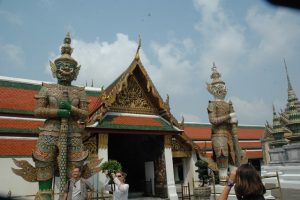
Figure 9 A extravagantly decorated gate. Just one of the entrances to Wat Phra Kaew, the Emerald Palace in the old city , to which King Rama I relocated Siam’s capital in 1782. It contains the royal residences and the number one Buddhist temple in Bangkok.
Figure 34 Figures holding up the structures inside of the Emerald Palace Temple Area
photo courtesy of Cheryl Devecka Pittsburgh, Pennsylavania
Figure35 The statue of the Emerald Buddha inside of the Emerald Temple Area
photo courtesy of Cheryl Devecka, Pittsburg, Pennsylvania.
Figure 10Chinese temple on the Thonburi canals which flow through the river city of Bangkok
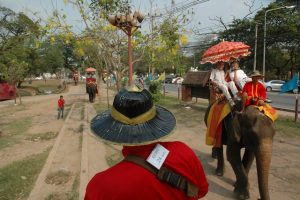
Figure 11Riding the elephants in the park near the ruins of the ancient Siam capital city of Ayutthaya.
Figure 12A young elephant named sugar cane at the http://www.elephantstay.comRoyal elephant Kraal and park of Ayutthaya Thailand. There are over 1800 elephants in this area. [while on a two week safari going around the whole Serengeti wildlife area and protected area in the Ngorongoro Crater park in Tanzania last year we only saw about two dozen the whole three weeks]
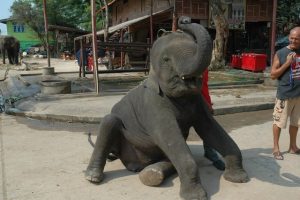
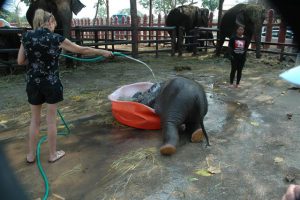
Figure 13Another two pictures of Sugar Cane taken at the Ayutthaya elephant rescue camp. In Christianity and Judaism St. Andrew, Jesus’ disciple on whom He called first when He needed help, represents divine strength for us inside of our concept of a concept of what divinity means to us. In Theravada Buddhism the elephant represents the strength of the Buddha as he meditates on how our souls can be liberated from desires we associate with clinging thoughts related to the material elements of our human experiences. See the greater discourse on the “Elephant-Footprint Simile” A Sariputta discourse from the Majjhima Nikaya for some sutras guiding you though this process. In Vedantic Hinduism the Elephant represents Ganesha, the Lord of the Sanskrit letters Gan,Glaum, or Gam. According the Swami Vishnu-Devananda’s book on Yoga and Meditation, in these Sanskrit “seed” symbols, Ga means Ganesha or Lord of the hardness in materality, la means that which pervades all, au means luster or brilliance, and ‘m’ or bindu means dispeller of sorrow [by the way ‘ish’ as in ‘ishvara’ means Lord of the projection of Truth and ‘n’ as in OM Namo Narayanaya [man of God, as divine Truth, normally means mindfulness of Truth]. So, understanding this, He is the Lord Shiva removing the obstacles that confront us all so we can discover the material parts of our experiences of His truth as God’s absolute consciousness and Truth inside of us all. He is a root chakra divinity removing and sanctifying human experience as a whole so God can express Himself as a #1 part of our faith in His Divine Truth.
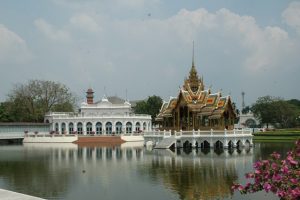
Figure 14The extravagantly royal summer palace of the King of Thailand [country formerly known as Siam or country of the poor people ].
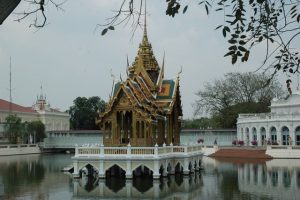
Figure 15Another part of the King’s summer palace. Most of the architecture is taken from the British style.
Figure 16Eastern and Oriental Express train cars parked on the rebuilt “Bridge over the River Kwai”. The bridge is part of the historic Thailand-Burma railway and the site wrote about in the book “The Bridge over the River Kwai” by Pierre Boule and the 1957 award winning film by the same name. Boule himself was a French POW in Thailand under the Japanese during the war. Both the book and the movie are works of fiction and there are some differences between them. In the movie Col. Nicholson is not successful in stopping setting off the initial charges to blow the bridge [but secondary, back-up charges do the job]. In the movie he accidently falls on the explosive detonator after being shot. In the movie he gives as justification for doing what he does that his country, the British, have signed a surrender treaty with the Japanese in Singapore and that this thus releases the POWs from responsibility. In the book the author talks about his despair at not accomplishing anything in his career up to this point.
The actual story as told by the real commanding officer a LTC Philip Toosey [ see the wikepeida article]is much different. He did not collaborate with the Japanese as hinted in the both the book and the move. His POW camp of about 2000 prisoners was at Tamarkan about 5 km from Kanchanaburi. In contrast to the movie he did not oppose escapes but actually helps two officers to do it. They the POWs themselves did everything they could to sabotage the bridge including collecting termites to eat the wooden structures and badly mixing the concrete. The Japanese were not incapable of designing a good bridge as layed out in the book but competent engineers. At the end of the film and in the book the wooden bridge was destroyed by a commando raid but in actuality they were used for two years before being destroyed by Allied aerial bombings.

Figure 17The Thailand-Burma railway bridge was shipped in sections from Java Indonesia. The original bridge was ordered built by the Japanese on 20 June 1942. An advance party of 600 British POWs was sent to Ban Pong Thailand. And, 3000 Australian were transferred in September to a camp in Thanbyuzayat to begin construction. According to Japanese figures there was a labour fore of 68,888 eventually employed in the task [to construct the original bridge which was later blown up by British Special Engineer forces based out of India]. British records claim that 13,000 Austraiian, 30,000 British, and 700 Americans worked on the railway and more than 10,000 died on its construction [400 of these dead were caused by ineffective allied bombing attacks.“Siam’s railway was the brainchild of modernizer King Chulalongkorp. Its first line connected Bangkok and Pak Nam the mouth of the Chai Phraya in 1893. Steam trains were replaced by diesels in 1958. The railway was built mostly as a single line. A hundred years ago an electronic ‘token’ system was already in place so that only one train could run on a stretch of single-track” Eastern and Oriental Express booklet “Trains are wondelful…to travel by train is to see nature and human beings, towns,… and rivers, in fact, to see life.” Agatha Christie
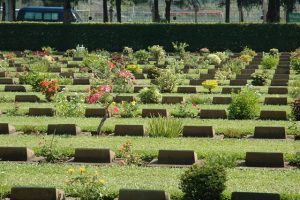
Figure 18Don-Rak British National War Cemetery in Kanchanaburi of Allied dead from the bridge construction project. Street signs in this city are shaped like a small carp-like fish the yisok found in the Kwai Noi and the Kwai Yai rivers. Kanchanaburi, despite being the site of the war atrocity (or maybe because of it), with its national parks, waterfalls and caves, is one of the most beautiful parts of Thailand. The 2005 History Channel Documentary “The True Story of the Bridge on the River Kwai” [available on Netflix]. To remember and understand the horrible trials and cruelties these soldiers endured during this awful part of WWII in SouthEast Asia, we need to watch this history… in order to never allow it to happen again to anyone.
Figure 19River town down the valley into the river canyon branching off from a switching point on the Eastern and Orient Express’s way to the Bridge over the River Kwai.
Figure 20Boats cruising the Chao Phraya River which flows through central Bangkok. Migrants have swollen the population of Bangkok from 2.1 million in 1960 to 10 million in 2008. Thailand is the world’s leading rice exporter. It also produces large amounts of Sugarcane, Oil Palm, Rubber, Coffee, Cashew, Pineapple, Mangosteen [Queen of the fruits] for export.
Figure38
Bali is principally Hindu. We continue on to Besakih, a complex of 24 temples. You can see swastikas as part of the design, but to the Balinese, they mean harmony:
Rsi Markandya was heading back to Tohlangkir with his 800 followers and buried panca datu in the village of Besakih so that all of his followers could survive. Panca datu is the five metals (gold, silver, bronze, copper, brass). After performing this ritual, and building a temple in that place, he continued westward to make a settlement.
In a jungle, at a glowing tree, he built a place for meditation called Pura Gunung Raung. He also opened settlement which is now called the village of Taro. He (Rsi Markandeya) then spread his doctrine to the village.
From that point he then moved to the south part and built a meditation place, now named Pura Puncak Payogan. And, at a delta between OosRiver and the Cerik Riverhe built a meditation place again, named Pura Gunung Lebah. It said that the blend of those two rivers have a savor as a medicine. And therefore that area is now called as ubad (medicine in Balinese language) which then change into the name of Ubud. (text and picture courtesy of Cheryl’s travelogue document)
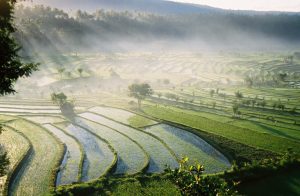
figure 39
We had lunch in a beautiful open air restaurant overlooking the rice fields in this volcanic mountain valley.
Figure 21Episcopal Cathedral across the Chao Praya river from the Pennisula hotel.
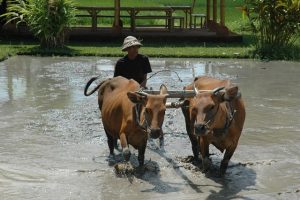
Figure 22 Functioning rice paddy in Bali where our joint alumni group had a rice growing talk about the subak, an ancient irrigation system still in use today, and lunch. These nice people let us put on some galoshes and try our hand at planting a few rice shoots. In Southwest Asia, Thailand, Malaysia, fields were tradionally ploughed with the aid of water buffalos. Here in Bali they still are.
Figure 23 A team of Water Buffalos being driven to smooth the rice field [after it is ploughed] in order to ready it for planting the rice shoots.
Figure 24 Thai Buddhist temple and backward facing statue of the Buddha, along the Thonburi canals.
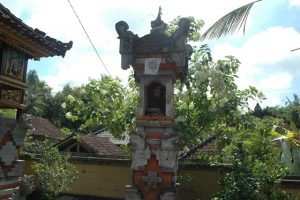
Figure 25One of the shrines at the Balinese housing compound in Bali that our group visited.
Balinese people believe in reincarnation – that a person’s soul is reborn into another life after death. They also believe that when a person dies, part of their spirit resides on earth and part lives in heaven. The Balinese build temples, or pura and they also build shrines and spirit houses. Temples are public places of worship, while shrines are more personal.
Every traditional Balinese home has a shrine area, which is called sanggah. The sanggah has walls around it and contains several small shrines. Here, offerings and rituals are conducted according to Balinese religion. Sanggah is the Hindu word for temple or place of worship.
Balinese people traditionally live in compounds. A compound consists of several separate buildings with many members of a family. A mother and father, children, grandparents, and even some aunts and uncles and their children can live in one large family compound. Compounds are surrounded by walls with open areas. The family members spend time together in the open, common areas. The compound also contain separate buildings for the kitchen, food storage area, and sleeping areas. Each compound contains a uilding with a roof and open sides, where the elderly people spend their time. This open building is located near the sanggah, the smaller walled areas containing the shrines. When family members become elderly, they move closer to and spend more time near the shrine area. This is symbolic of the day they die, when their spirits will come to reside in the family sanggah.
We did visit a family compound, and saw the school, young girls practicing traditional dancing, a young man painting, an older man doing wood work, and women cooking.
We also visited rice fields and watched the process and could plant if we wanted to. There was a really small, older gentleman who had a water buffalo that would pull a plow in endless circles. Periodically a group of ducks would jump in and swim ahead (they take care of any bugs). This was followed by lunch totally prepared outside: rice in a clay cooker over a fire, and the rest prepared in woks over burners. This was followed by another legendary Asian fruit: durian —
text from travelogue of Cheryl Divecha courtesy of Cheryl
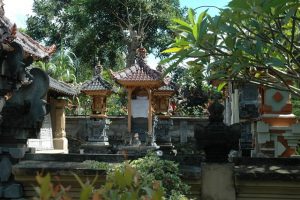
Figure 26 Shrines to the ancestors at a traditional Balinese housing compound in Bali.
Figure 27 Young Balinese high school students who are studying dance at the school and housing compound. One of the first rules of prayer is to praise God, give thanks first. Some of things we normally have reason to give thanks for are: 1) Good food, 2)Good households and places to live in around us[our natural environment], 3)Good company, love we love as well as those who are opposing us, 4) Our blessed spiritual ancestors, 5) Our blessed heritage due to our blood relatives.
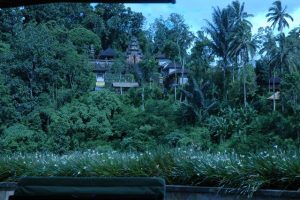
Figure 28 Hindu temple across the valley from the Ubud Gardens Hotel Resort in Ubud Bali.
Figure 29 Individual swimming pools for each room at the Ubud Hanging Gardens in Bali.
The basic Hindu Vedanta Yogic “Chakra Meditations” are based on a system of seven Chakra spiritual body definitions and correspondences with our physical, astral, intellectual, mental and causal sheaths.
Their names are given in Sanskrit because of the important Nada Yoga letter thought image [visual] and meditative conceptual likeness[sound] aspects of the definitions.
One of the best ways to learn these Chakra definitions and correspondences is by doing the various Hatha Yoga asanas, each of which helps you concentrate your breathing and thought in a particular one. This learning technique is similar to the way you learn to play the piano by first using finger exercises to build habitual mental thought associations between the piano keys and your thought patterns.
Here they are listed as meditations to be thought of from bottom to top.
1) Muladhara OM 1st root chakra representing the present moment seed
2) Swadishthana OM 2nd chakra representing emotions
3) Manipura OM 3rd chakra representing will
4) Anahata OM 4th chakra representing the heart and love
5) Vishudda OM 5th chakra representing the throat and spiritual causal power
6) Ajna OM 6th chakra representing the third eye and super-conscious mind mental control
7) Sahasraha OM 7th chakra representing the top crown of God’s truth manifesting itself in us.
Because our spiritual bodies are defined metaphysically as five dimensional substances the bottom to top laya[dissolution] of the ego meditations need to be preceeded by bottom to top meditations on the 7 different worlds:
1) OM Bhur, the physical universe
2) OM Bhuvah, the astral universe
3) OM Svah, the individual’s divine self heavenly universe
4) OM Maha, the collective universe of all of us dwelling in the mind or heart of God
5) OM Janaha, the individual’s and God’s causal universe
6) OM Tapaha, the individual’s austerity or cross in reaching these places
7) OM Satyam, God’s truth inside of the individual [which is One when God is One]
OM Shanti OM [may God’s Peace be inside of myself]…OM Shanti OM [may God’s Peace dwell inside of You]…OM Shanti OM [may God’s Peace be and dwell inside of both us, may it dwell with us and be of us forevermore]
that also correspond to these chakras. These seven “lokas” or places can be chanted into our mental thoughts by singing the 8 count Vedantic Gayatri Hymn in the morning and doing the corresponding “Surya Namaskar” asana. There are also divine aspects of male and female deities which are associated with each chakra and have their own Gayatri hymn chant. Notice that in the first part of the meditation [corresponding to letting parts or ourselves be dissolved bottom to top in God inside and outside of us] the name of God OM [Ishvaram, “this” is “that” God’s Holy Spirit inside of each of us and all us proceeding in perfection lovingly outwardly as Divine Breath Pranava] is said after the chakra name. OM is one of the four Sanskrit names of God represented in the 1stpresent moment root chakra[ and also, by the way, in all the other chakras]. The other three being 1) Sudda – Vidya or the Holy Spirit’s sanctification by mental separation of our thoughts into “awareness of awareness” and the “concept of a concept” or “this is this” and “that is that”. 2) Shakti or the dynamic female power in God’s presence which we call by the name I AM, 3) Sat-Chid-Ananda… Reality, Thought, Love the Divine Male Static, “that” is “this” which like the Archangel Michael saying “Be Still and Know that I AM God” judges us and the Truth of God’s words in us as we try to represent Him.
And, in the second part [corresponding to letting the seven parts the Divine Light and Impersonal Objective Life of YHWH Elohim’s world being re-created inside and outside of us] the name of God OM is said before the name of the different parts of God’s world. See the book “Yoga and Meditation” by Swami Vishnu- Devananda for the Sanskrit along with English translations of these. The scriptural source for the five dimensional metaphysical character of our spiritual bodies is the “Taittireya Upanishad” the English translation by Swami Narayana Prasad is a good one to study to help understand it. Also, for some more sequential top to bottom Divine Chakra Meditation in terms of the conceptual parts of Jesus’s name[ that is in a personal sense, His twelve disciples] and some blessed associated thought correspondences see the long time angelic prayer director, James Freeman’s, meditations from our friends at the Unity School of Christianity’s Silent Unity Prayer Group. These are posted on our website discussionboard and prayers sections in several places.

Figure 30 View of the boats in Singapore Harbor from the top floors of the Mandarin Oriental Hotel in Singapore. The found of Singapore, Sir Thomas Raffles, predicted that one day it be a place of “considerable magnitude and importance”. In addition to this wondelful harbor [which was cleaned up environmentally by the city in the 1990s] they have, just to mention a few things, a wondelful Southeast Asian History Museum near Empress Place, a since 1850s St. Andrew’s Episcopal Cathedra, fascinating shopping district with some beautiful homes off of Orchard Rd. near the U.S. Embassy, and next door to that one of the best botanical gardens in the world. I spent an extra two days there at the Singapore Hilton and enjoyed two one hour group Tai Chi exercise sessions at the Orchid gardens and the evolution gardens there. “In colonial time Malaysia offered ambitious young Europeans the prospect of wealth, excitement, and even danger along with the chance of a job with responsibility at a very young age” Eastern and Oriental Express, the Journey a small booklet given to travelers.

Figure 36 Merlion Park on the bay in downtown Singapore with a Fountain of a half-Lion, half-Fish the symbol of Singapore. Photo due to Cheryl Devecka.
Figure37 A view of the city and Merlion bay harbor of Singapore at night with a large Ferris wheel in the center of the picture and the large three column Marina Bay Sands Resort on left [on top of which is a skypark and pool. Photo taken by Cheryl Devecka.
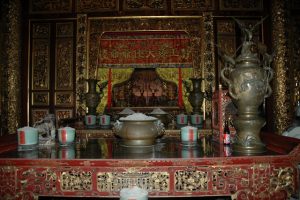
Figure 31 Khoo Kanqsi Chinese clan-association temple complexin Georgetown Malaysia across the bay from the train stop at Panang. [from the Eastern and Oriental Express trip] This building reflects the traditional organization of a Hokkien clan village and was buil in 1906. The tiled roof weighs 25 tons.
Figure 32 Morning water lilies in the Lotus Pond facing the restaurant at Jimbaran Bay.
Figure 33 Morning waves breaking into the beachfront at the Jimbaran Bay Hotel Resort Bali. For some related thoughts and meditations on the Jewish morning blessings see the http://www.ourprayergroup.blogspot.comarchive Wednesday October 28, 2009 which contains connected photographs from the outer banks of South Carolina morning waves which contains English letter transliterations of the Hebrew words in the prayers.
These word by word English translations are also from the book “Birkhot Hashachar (Morning Blessings)…My People’s Prayer Book” Volume 5 by Rabbi L.A. Hoffman
I have added some Jewish “Chakra Meditation” correspondences.
8th Day
On, the eighth day God blessed what he had blessed. He remembered us in him. And, with his breath he formed the pre-existent idea of our existence and reality inside of the World and him into the everlasting reality of its truth. Thus, God our Father made himself Jesus Christ (the fullness of his image and likeness in us), our King of Kings.
Morning Blessings
(to be said upon arising)
My God, the soul you have placed… within me it is pure. You created it; You formed it; You breathed it into me; You keep it within me; and You will eventually take it from me… and return it to me in the time to come. So long as my soul is within me, I gratefully acknowledge your presence… Adonay my God and my ancestor’s God, Master of all creation, Lord of all souls, Blessed are you, Adonay, who restores souls to dead corpses.
“Blessed are You, Adonai our God, ruler of the world, who opens the eyes of the blind.”
Keter
“Blessed are You, Adonai our God, Ruler of the world who clothes the naked [with souls]”
Hod
“Blessed are You, Adonai our God, Ruler of the world, who raises those who are bent over.”
Yesod
“Blessed are You Adonai our God, Ruler of the world, who spreads out the land on the water.”
Binah
“Blessed are You, Adonai our God, Ruler of the world who has provided my every need.”
Chesed
“Blessed are You, Adonai our God, Ruler of the world who makes firm man’s steps.”
Netzach
“Blessed are You, Adonai our God, Ruler of the world, who girds Israel with might.”
Gevorah
“Blessed are You, Adonai our God, Ruler of the world, who crowns Israel with glory.”
Tiferet
“Blessed are You, Adonai our God, Ruler of the world who give strength to the tired.”
Chochmah
“Blessed are You, Adonai our God, Ruler of the world who removes sleep from my eyes, slumber from my eyelids.”
